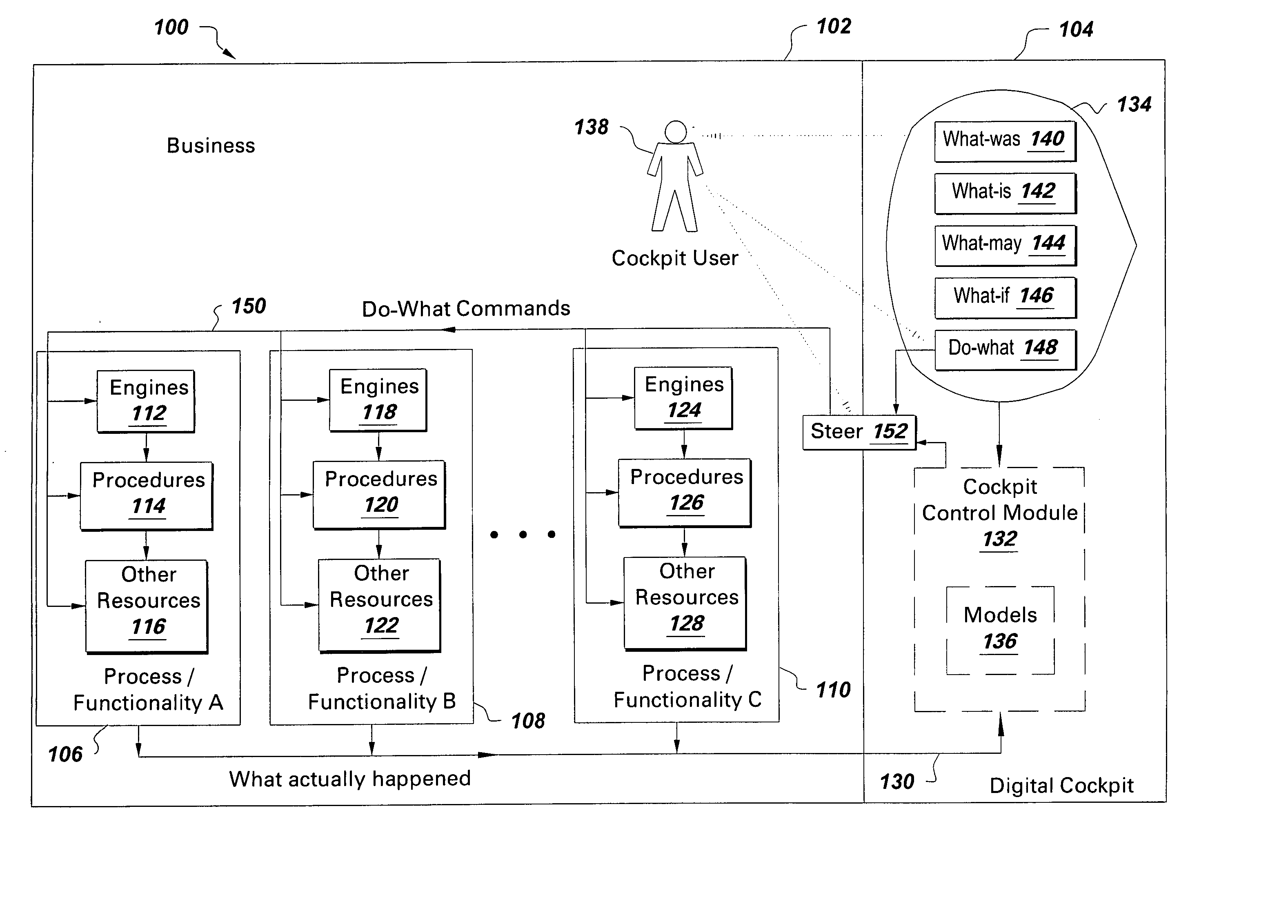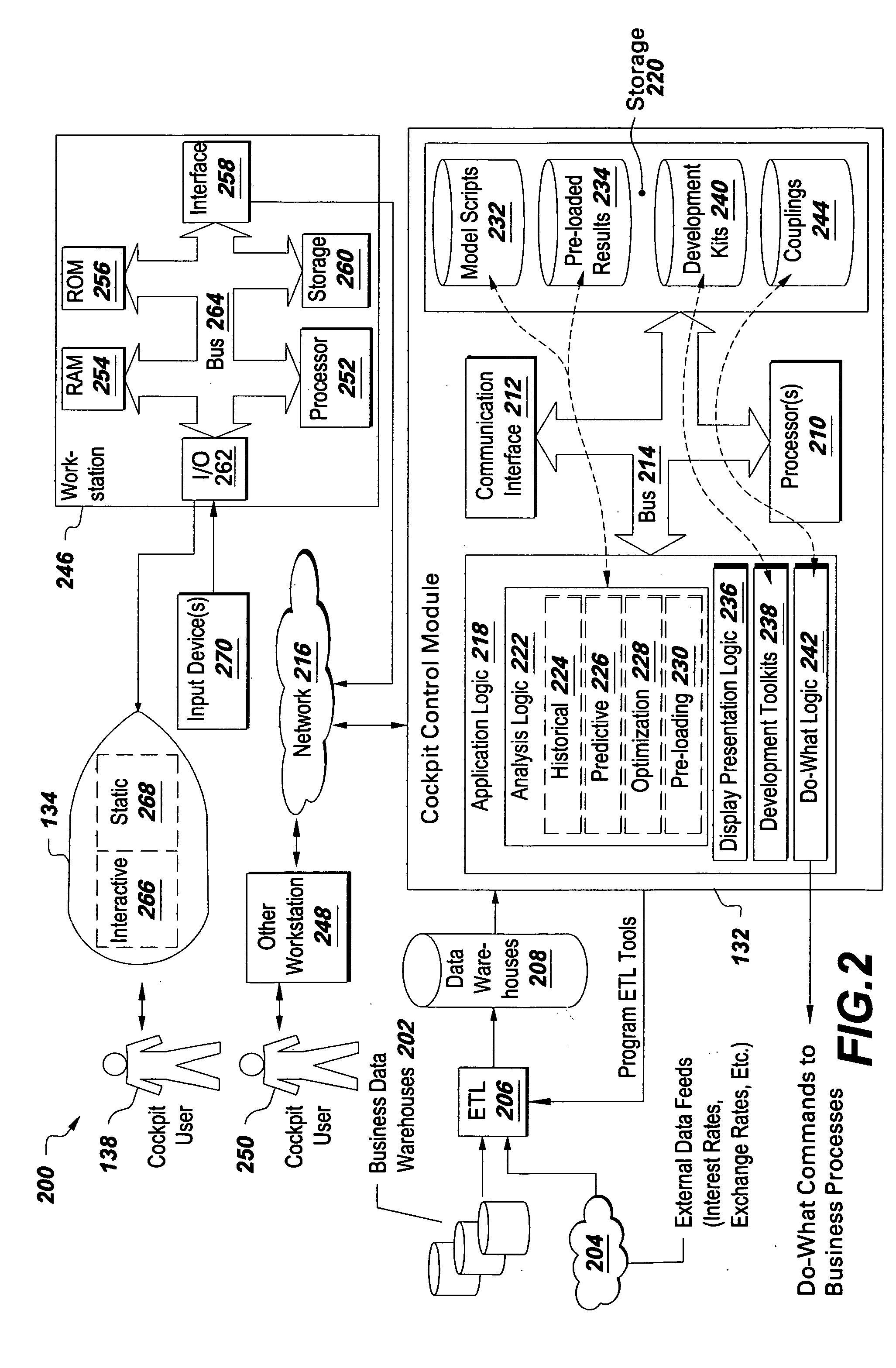Method for the use of and interaction with business system transfer functions
a business system and function technology, applied in the direction of electrical programme control, programme total factory control, instruments, etc., can solve the problems of polynomial transfer functions that require relatively large does, are not easy to analyze future scenarios, and are difficult to make decision assumptions
- Summary
- Abstract
- Description
- Claims
- Application Information
AI Technical Summary
Problems solved by technology
Method used
Image
Examples
Embodiment Construction
[0024] This disclosure pertains to a technique for working with a transfer function that quantifies a relationship between input and output parameters of a business system. Techniques for integrating that transfer function into a business intelligence system that includes human interactivity in a prospective manner are also described. By way of introduction, a business intelligence system generally refers to any kind of infrastructure for providing business analysis within a business. In the context of this business intelligence system, a decisioning control system that provides business forecasts is also described. The system is used to control a business that includes multiple interrelated processes. As used herein, a “business” may refer broadly to any enterprise for providing goods or services, whether for profit or used to achieve some other measured performance goal. Businesses may be a single entity, or a conglomerate entity that includes several different business groups or ...
PUM
 Login to View More
Login to View More Abstract
Description
Claims
Application Information
 Login to View More
Login to View More - R&D
- Intellectual Property
- Life Sciences
- Materials
- Tech Scout
- Unparalleled Data Quality
- Higher Quality Content
- 60% Fewer Hallucinations
Browse by: Latest US Patents, China's latest patents, Technical Efficacy Thesaurus, Application Domain, Technology Topic, Popular Technical Reports.
© 2025 PatSnap. All rights reserved.Legal|Privacy policy|Modern Slavery Act Transparency Statement|Sitemap|About US| Contact US: help@patsnap.com



